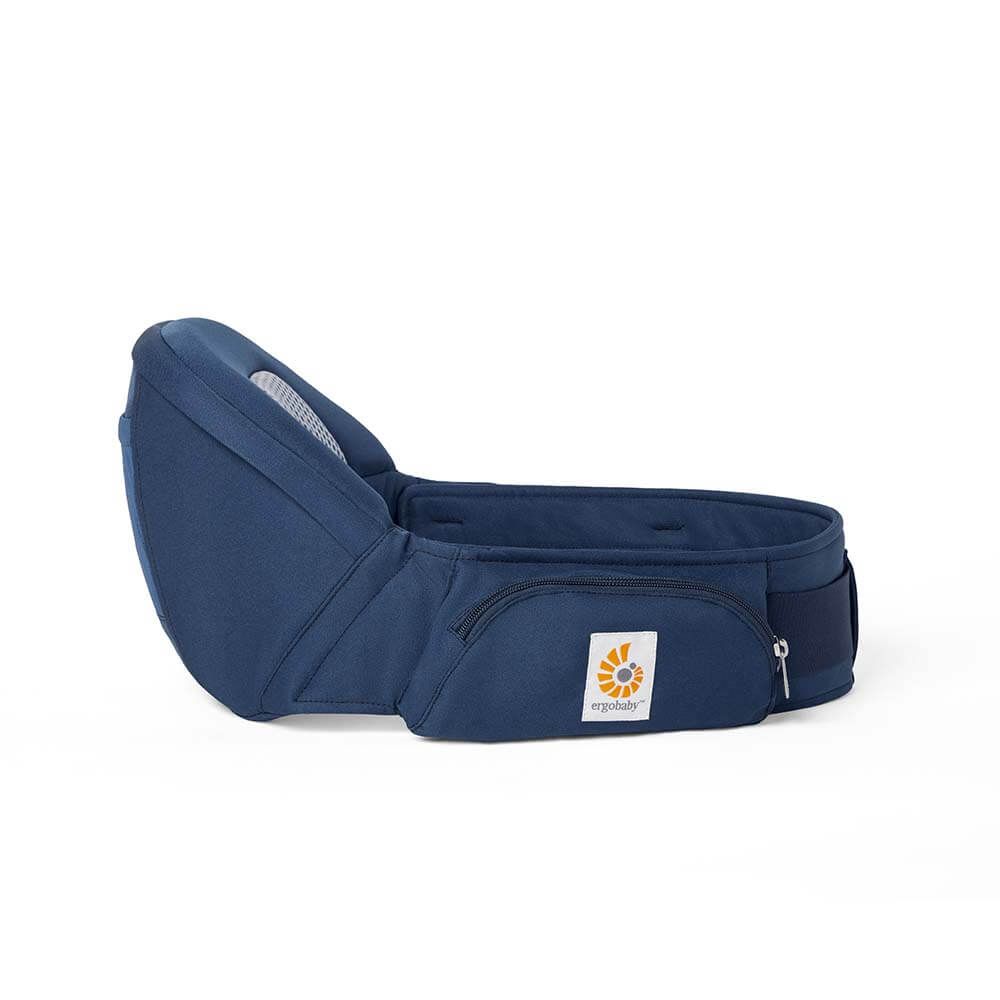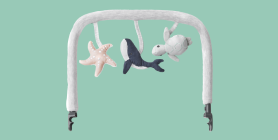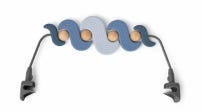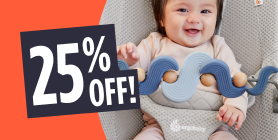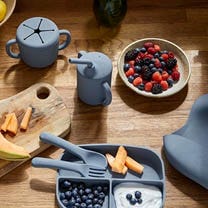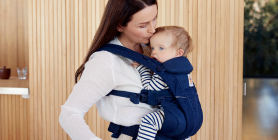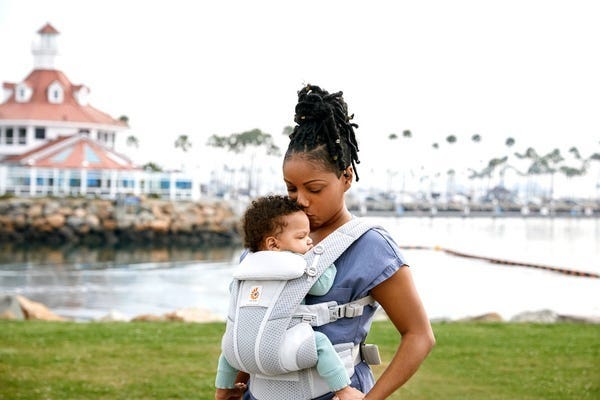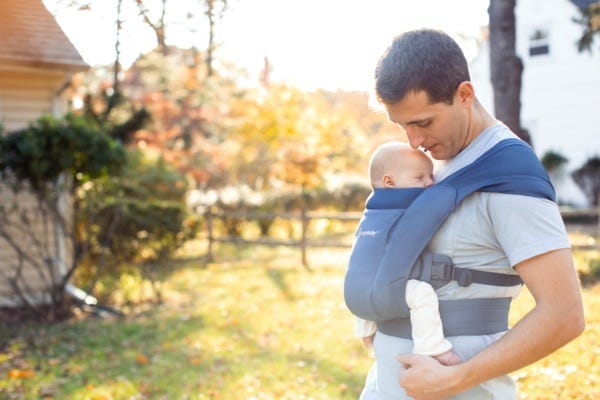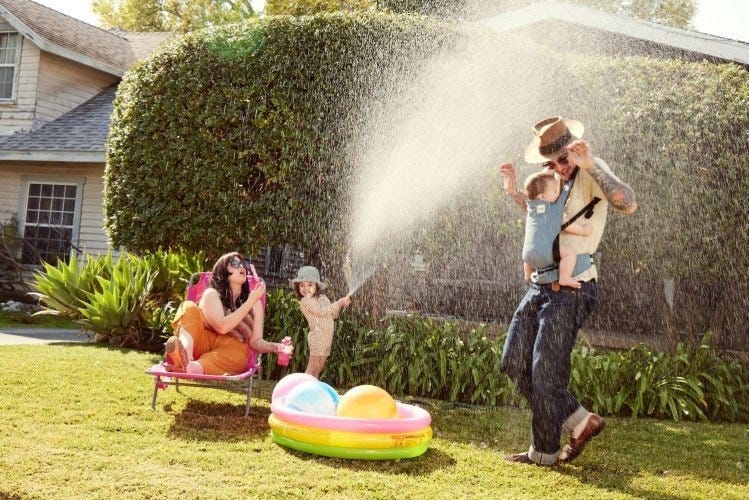Babies have many ways of communicating with us. They have distinctive cries to tell us when they’re hungry, tired, or gassy, and when they’ve soiled their diaper. The cry of a baby who has colic, however, does not fit into any of these categories. I will never forget the first time a baby who had true colic was placed into my hands. Her cry was piercing and relentless, and none of her parents’ attempts to soothe her were working. It was obvious that she was in extreme discomfort. Her body was rigid and her abdomen was hardened with gas. Her legs and feet were flexed, her back was arched, and her fingers were clenched into tiny fists. Her crying seemed to come from the depths of her being. It is said that when a baby has true colic, their uncontrollable and inconsolable crying lasts for more than three hours a day, at least three days a week, and continues for more than three weeks. Dr. Morris Wessel proposed this widely used definition of baby colic over fifty years ago. Since there are no exact parameters to diagnose colic, there are a number of approaches that health professionals suggest to help relieve the associated symptoms. These may include specific changes in the mother’s diet, especially if she is nursing; tightly swaddling the baby so his/her limbs remain close to their body; specific herbs and formulas designed to calm the nervous system and digestion; and, if the mother is using formula, checking to see if there are any allergies to the formula’s ingredients. Foods that can particularly irritate babies include: sugar, coffee, soy, chocolate, garlic, onion, dairy, and gluten. A more simple diet may in turn alleviate gas and digestive stress on the baby. Other suggestions that parents of colicky babies have shared with me include: carrying your baby face-down in the football hold (see http://video.about.com/babyparenting/The-Football-Hold-for-Babies.htm) and offering the baby extended exposure to vibration, including bouncing, driving in the car, or even putting your baby in a cushioned laundry basket on top of the dryer. From a chiropractic perspective, it is believed that colicky symptoms could be associated with subluxations or nerve interference, which are significantly alleviated by chiropractic adjustments. In my practice, I find a strong association between colic and subluxations of the upper neck and the cranial bones. In a baby, these subluxations can be attributed to trauma and tension resulting from the birth process. Often times when a baby experiences a lot of pressure in their cranium, their constant crying may be an attempt to release this tension. Infant adjustments are done with light fingertip pressure, and it is common to hear the baby sigh in relief when subluxations are cleared from their body. It is common for parents to report that their colicky babies have improved sleeping patterns, longer periods of ease between crying, and overall improved digestion and less gassiness after adjustments. The frequency of care necessary will vary between babies, but I usually like to see babies who have colic every few days for a few weeks, until their symptoms subside, and then regularly throughout growth. If symptoms persist after regular adjustments, we will then take a closer look at the breast-feeding mother’s diet, as well as other stressors that may be influencing their and their baby’s nervous systems. To find a pediatric chiropractor in your area, visit icpa4kids.org i Wessel MA, Cobb JC, Jackson EB, Harris GS Jr., Detwiler AC. Paroxysmal fussing in infancy, sometimes called "colic". Pediatrics. 1954;14:421-434.
Emotional Benefits of Getting Outside
Spending time in nature with your baby can strengthen the bond between you. The simple act of holding your baby close, feeling their warmth, and sharing new experiences together can create strong emotional connections. It’s also a wonderful way to reduce stress and improve your mood. When my littles were extra fussy, I’d take a walk around the neighborhood. Even though I don't live in an area with trails and surrounded by nature, simply behind outside changed everything. A little vitamin D does wonders!
Cognitive Development
Nature is a sensory wonderland for babies. The different sights, sounds, and smells can stimulate your baby’s senses and promote cognitive development. Watching leaves rustle, hearing birds chirp, and feeling the texture of a tree bark can all contribute to their learning and development.
All About Baby Carriers for Nature Adventures
Choosing the Right Baby Carrier
When it comes to selecting the best baby carrier for summer adventures, there are several options to consider.
Types of Baby Carriers:
- Wraps: Perfect for newborns, providing a snug and secure fit.
- Slings: Ideal for quick and easy use, offering good ventilation.
- Soft Structured Carriers: Versatile and comfortable for both parent and baby, suitable for longer trips.
Factors to Consider:
- Baby’s Age and Weight: Ensure the carrier is appropriate for your baby’s size and weight. For example, Ergobaby’s Embrace Newborn Carrier is perfect for the fourth trimester where baby is small and you’re looking for an easy way to stay close. As they grow, you’ll want to upgrade to an all-position carrier that’s meant for growing babies.
- Parent’s Comfort and Ergonomics: Look for carriers with padded shoulder straps and lumbar support if you’re planning on longer outings.
- Ease of Use: Choose a carrier that is easy to put on and take off.
- Climate and Breathability: Opt for carriers made of breathable fabrics to keep you and your baby cool in hot weather.
Safety Tips:
- Proper Positioning: Ensure your baby is seated correctly, with their legs in an "M" position and their head should be close enough to kiss.
- Checking for Wear and Tear: Regularly inspect your carrier for any signs of damage.
- Ensuring Adequate Support: Make sure the carrier provides proper support for your baby’s head and neck.
Exploring Nature with a Baby Carrier
Ideal Spots for a Nature Walk with Baby
- Parks and Gardens: Great for leisurely walks and picnics.
- Nature Trails and Forests: Perfect for more adventurous outings.
- Beaches and Lakesides: Wonderful for enjoying the water and sand, with the right carrier.
Activity Ideas
- Hiking: Enjoy a scenic hike with a hiking baby carrier that offers support and storage.
- Bird Watching: Use your carrier to keep your baby close while you explore and observe wildlife.
- Picnics: A carrier can free up your hands, making it easier to carry picnic supplies.
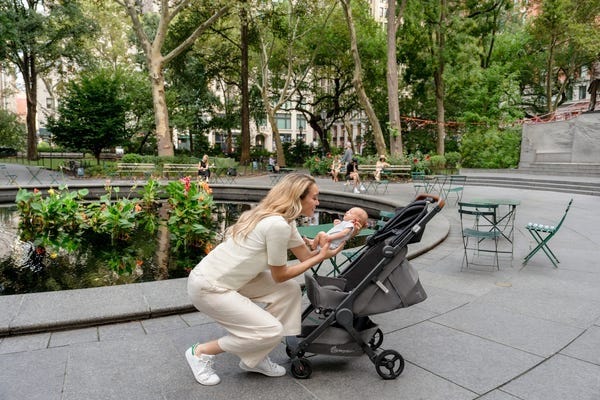

Advantages of Using Strollers for Nature Adventures
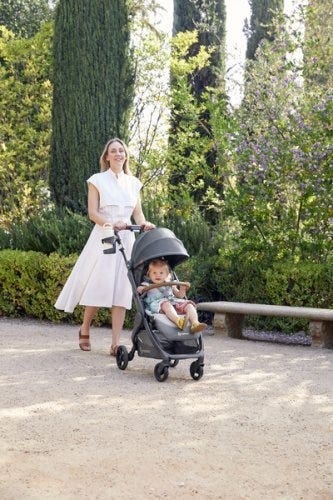

While baby carriers are fantastic for mobility and closeness, depending on the adventure of choice you might want to be a stroller along too.
There are a LOT of baby stroller options on the market. So we understand how confusing it can be to choose the one that’s right for your family. Not only are there a variety of brands, but a variety of strollers that serve different purposes.
There are a few types of strollers on the market:
- Full-sized stroller: This is typically the stroller parents thing of buying for all its versatility.
- Lightweight or umbrella stroller:These compact strollers are perfect for on-the-go adventures.
- Jogging stroller: Designed for parents who want to combine fitness with outdoor adventures.
- Double stroller: Designed for parents with multiple kids, especially twins.
- Car seat carrier: These strollers connect to a specific car seat. We don't typically recommend these as they can be unsafe for baby and uncomfortable for parents who are pushing.
Learn more about the types of strollers and which one would be best for you.
Benefits of Bringing a Stroller
- Storage Space for Gear: Ample room for carrying all your essentials like a diaper bag, beach toys and more.
- Shade and Weather Protection: Built-in canopies to shield your baby from the sun when they are lounging.
- Options: If you have more than one kid, you can stroll with one and carry the other. Or, if you’re getting warm or your little one is getting fussy, you can switch up their position from stroller to carrier or vice versa.
Safety Tips for Strollers
- Ensure your stroller is in good working condition. Make sure buckles are still buckling and that there are no rips or holes that could compromise your baby’s safety.
- Use sunshades or bug nets to protect your little one’s skin.
- Securing the baby properly: always buckle up your baby for safety even if you think they are old enough to go without the buckle.
Combining Baby Carriers and Strollers
For the ultimate flexibility, consider using both a baby carrier and a stroller on your outings.
Combining both options allows you to adapt to different situations. Use the carrier for more rugged trails and switch to the stroller for smoother paths or when your baby needs a nap.
Transition Tips
- Smooth Transitions: Plan stops where you can easily switch from carrier to stroller.
- Pack Light: Only bring essentials to make transitions easier.
Tips for a Successful Adventure
Planning Ahead
- Route Planning: Choose baby-friendly trails and parks. Check local mom groups or outdoor groups and get recommendations for the best outings for kids.
- Check Weather Conditions: Avoid extreme heat or unpredictable weather. Even with our most breathable carriers, when it’s hot, it’s hot. And having two bodies against each other in the heat will be naturally hot and sticky already.
- Packing Checklist: Include diapers, snacks, water, sunscreen, and a first-aid kit. These all-position carriers have storage pockets where you can fit some of the items easily!
- Stay Hydrated and Nourished: Pack healthy snacks to keep energy levels up and bring plenty of water for both you and baby.
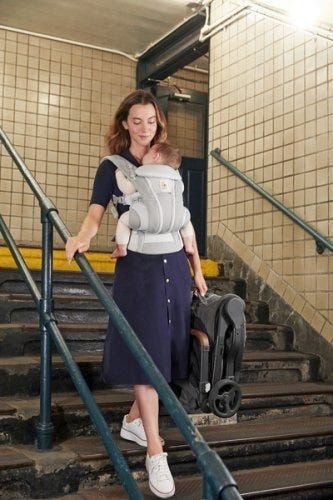

Summer adventures with your baby are a wonderful way to create lasting memories and enjoy the beauty of nature together. From baby carriers to strollers, Ergobaby products are designed to provide comfort and ease for both you and your little one. So, gear up, get outside, and explore the world with your baby by your side.
Ready to embark on your own summer adventures? Check out Ergobaby’s range of baby carriers and strollers to find the perfect match for your family’s needs. Visit our website today and start planning your next outdoor excursion!





